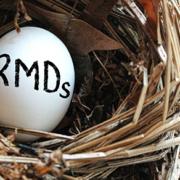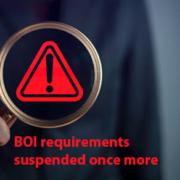Small business strategy: A heavy vehicle plus a home office equals tax savings
New and used “heavy” SUVs, pickups and vans placed in service in 2025 are potentially eligible for big first-year depreciation write-offs. One requirement is you must use the vehicle more than 50% for business. If your business usage is between 51% and 99%, you may be able to deduct that percentage of the cost in the first year. The write-off will reduce your federal income tax bill and your self-employment tax bill, if applicable. You might get a state tax income deduction too.
Setting up a business office in your home for this year can also help you collect tax savings. Here’s what you need to know about the benefits of combining these two tax breaks.
First, buy a suitably heavy vehicle
The generous first-year depreciation deal is only available for an SUV, pickup, or van with a manufacturer’s gross vehicle weight rating (GVWR) above 6,000 pounds that’s purchased (not leased). First-year depreciation deductions for lighter vehicles are subject to smaller depreciation limits of up to $20,400 in 2024. (The 2025 amount hasn’t come out yet.)
It’s not hard to find attractive vehicles with GVWRs above the 6,000-pound threshold. Examples include the Cadillac Escalade, Jeep Grand Cherokee, Chevy Tahoe, Ford Explorer, Lincoln Navigator, and many full-size pickups. You can usually find the GVWR on a label on the inside edge of the driver’s side door.
Take advantage of generous depreciation deductions
Favorable depreciation rules apply to heavy SUVs, pickups and vans that are used over 50% for business because they’re classified as transportation equipment for federal income tax purposes. Three factors to keep in mind:
- First-year Section 179 deductions. Many businesses can write off most or all of the business-use portion of a heavy vehicle’s cost in year 1 under the Section 179 deduction privilege. The maximum Sec. 179 deduction for tax years beginning in 2024 is $1.25 million.
- Limited Sec. 179 deductions for heavy SUVs. There’s a limit on Sec. 179 deductions for heavy SUVs with GVWRs between 6,001 and 14,000 pounds. For tax years beginning in 2025, the limit is $31,300.
- First-year bonus depreciation. For heavy vehicles placed in service in 2025, the first-year bonus depreciation percentage is currently 40%, but future legislation may allow a bigger write-off. There are several limitations on Sec. 179 deductions but no limits on 40% bonus depreciation. So, bonus depreciation can help offset the impact of Sec. 179 limitations, if applicable.
Then, qualify for home office deductions
Again, the favorable first-year depreciation rules are only allowed if you use your heavy SUV, pickup, or van over 50% for business.
You’re much more likely to pass the over-50% test if you have an office in your home that qualifies as your principal place of business. Then, all the commuting mileage from your home office to temporary work locations, such as client sites, is considered business mileage. The same is true for mileage between your home office and any other regular place of business, such as another office you keep. This is also the case for mileage between your other regular place of business and temporary work locations.
Bottom line: When your home office qualifies as a principal place of business, you can easily rack up plenty of business miles. That makes passing the over-50%-business-use test for your heavy vehicle much easier.
How do you make your home office your principal place of business? The first way is to conduct most of your income-earning activities there. The second way is to conduct administrative and management chores there. But don’t make substantial use of any other fixed location (like another office) for these chores.
Key points: You must use the home office space regularly and exclusively for business throughout the year. Also, if you’re employed by your own corporation (as opposed to being self-employed), you can’t deduct home office expenses under the current federal income tax rules.
Double tax break
You can potentially claim generous first-year depreciation deductions for heavy business vehicles and also claim home office deductions. The combination can result in major tax savings. Contact us if you have questions or want more information about this strategy.
© 2025












